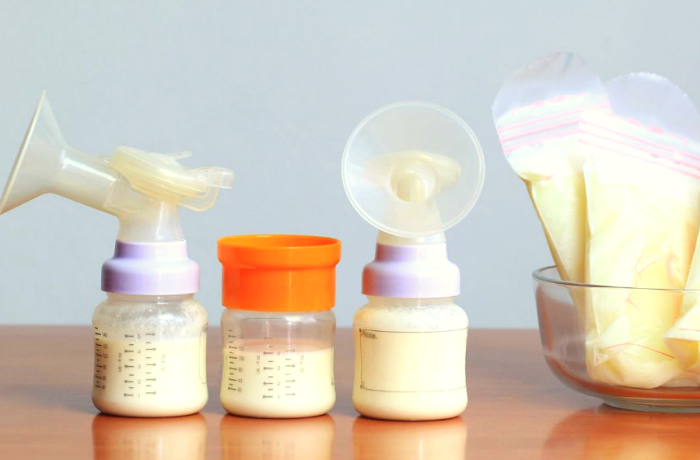Help Your Child Eat Less Sugar Now
by on 02/08/2025 ...

One thing all kids can agree on is that the sweetness of sugar is quite possibly the best kind of flavour in the whole world. To the taste buds of kids below the ages of 12 years old, sugar is best eaten when it is bitten, chewed, sucked, licked and even swallowed whole. While most of us have had some resemblance of a childhood consisting of wholesome homemade food and the occasional sweet treat from the ice-cream truck only on Sundays, our children have ready access to sugary, over-processed food at almost every minute of every day.
To prove this hypothesis, all one has to do is take a good long look at the kids at playgrounds, shopping malls, preschools and kindergartens. An American study has also supported the fact by stating that as many as 1 in 4 children between the ages of 2 to 5 years old are considered overweight or obese!
In other words, gone are the days where there was only one really large kid in school. Sadly, kids who are considered “fat” also tend to be at higher risk of being bullied or singled out during team events.
How Did This Happen?
According to the American research, most children are obese at the tender age of 2 simply due to the overload of sugar consumption. While parents may opt for sugar-free diets at home, your child may still be consuming high amounts of sugar contained in packet foods and drinks from external sources, such as the school canteen or at restaurants. Sadly, while the American Heart Association recommends that children of preschooling age only consume 3 teaspoons of sugar per day, recent survey shows that preschoolers actually consume up to a maximum of 12 teaspoons of sugar on an average daily basis; which is four times the recommended intake for preschoolers.
Out of Sight, Out of Mind
Supermodel and mother to four children, Heidi Klum, attributed her dramatic weight loss after pregnancy to a complete overhaul of her meal plan. So instead of forcing your child into hateful exercises or diet regimes, make a commitment to clear out your pantry of sugar laden food. This may include doughnuts, biscuits with cream, cake, sugared cereal, chocolates and candy. If your toddler can’t eat sugar at home, then as their role model, you shouldn’t be having any sweetened food as well. By removing these unhealthy products, you will also be removing the temptation for your child, who will not have the option of begging, throwing a tantrum or stealing a sweet treat from the kitchen when you’re not looking.
Do note that your child will probably perform a dramatic hissy fit when he or she realizes that their favourite food is no longer available to them, but if you stay firm long enough, they will eventually move on.
Keep It Healthy and Pretty
At the same time, you would also want to encourage your child to eat healthily and regularly as well, so do stock your kitchen with wholesome alternatives such as fruit, wholegrain crackers, raisins, cheese sticks, trail mix and air-popped popcorn (for children over the age of three). Raw honey, peanut butter and natural yoghurt are also good alternatives to flavouring boring adult snacks as well! Parents may also consider packing adorable bento boxes for their kids as well. Bento, is the Japanese word for lunch box, and has become a popular phenomenon in Japan as it effectively encourages school children to eat healthier food, such as vegetables and beans.
Children like to feed themselves, so always make sure that all healthy snacks are easily available to them. For instance, always have some cut fruit available in the kitchen so they can grab-and-go the moment they feel like having a snack. Alternatively, you may also designate a snack shelf just for the kids or leave the food out on the kitchen counter where it’s easily seen by all family members.
Always Read the Fine Print
At a glance, it seems as though almost every product available in supermarket aisles are either low-fat, sugar-free or fortified with extra vitamins and minerals. The sad, cold truth though is that these are but marketing words used to confuse the customer. The tricky thing about processed sugar is that it hides in literally every food product, even those which do not taste sweet, such as salad dressing, ketchup, peanut butter and barbecue sauce.
The good news is that all food manufacturers are legally obliged to list their ingredients on the Nutrition Facts label printed unto every product sold. So all you really need to do before deciding on a purchase is to turn the product around and read the sugar content. Generally, you would want to steer away from food that contains fructose corn syrup, dextrose, sucrose, maltose, cane syrup or anything with more than 10g of regular sugar. At the same time, you might also want to consider avoiding the 3-in-1 instant packets as well, as those packet drinks tend to contain an extra 10g of sugar per satchet.
Have You Been Drinking?
The only two drinks kids can drink large amounts of is water and low-fat milk. Other drinks, including soda water, coffee (with sugar), tea (with sugar), chocolate and sports/energy drinks will only contribute to child obesity. Statistically, a 16-ounce soda drink can actually contain a minimum of 27 teaspoons of added sugar! A study in Paediatrics also concluded that children who drank sugary drinks regularly had a 60% increase of risk in becoming obese later on. Sadly, a whopping 44% of children between 18 to 24 months old, as well as 70% of children between the ages of 2 to 5 years old regularly drink sugar-laden drinks on a daily basis.
While TV advertisements would have you believe that drinking freshly peeled and packaged fruit juice is convenient, delicious and healthy at the same time, these marketers have also neglected to mention the high concentrated amount of sugar added into the commercial drink. A better alternative would be to prepare pure fruit juice at home for your children, although you should also limit the serving to four to six ounces only as fruits also contain natural sugar.
We Live to Eat, Not Eat to Live
Just like everything else that’s good in life, all good things must come in moderation. As no childhood is really complete without the occasional birthday cake, festival candy or random sweet treat, it would be a good idea to set some ground rules when it comes to dessert indulgence. For example, children may not have any dessert until they finish their vegetables, or children are only allowed to buy one type of candy during the trip to the supermarket. A big bonus to setting ground rules when it comes to dessert is that it will eventually teach your child discipline, patience and will significantly reduce the number of tantrums revolving dessert.
When In Doubt, Seek Help
The biggest challenge with controlling your child’s diet is making sure that he or she adheres to the plan even when they’re out of your sight! A good method of ensuring that your child is fed well with all the right foods is to enlist the help of fellow moms. For example, you could take turns feeding your group of children or help your toddlers learn from one another as you go through this new period of breaking the sugar habit. Children are natural copy cats, so they tend to want to improve themselves when they see that other children are also not allowed cookies and candy in the afternoon.
At the same time, you may also want to seek help from the grandparents of your children, who are the likeliest suspects when it comes to spoiling your children. Have a talk with your parents about the necessity of keeping your child’s sugar intake to a minimum for a better quality of life, so you won’t have to worry about your kids breaking all sugar-rules every time they visit grandma and grandpa.

































